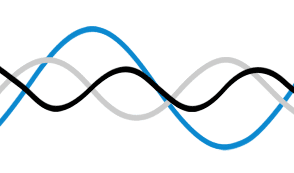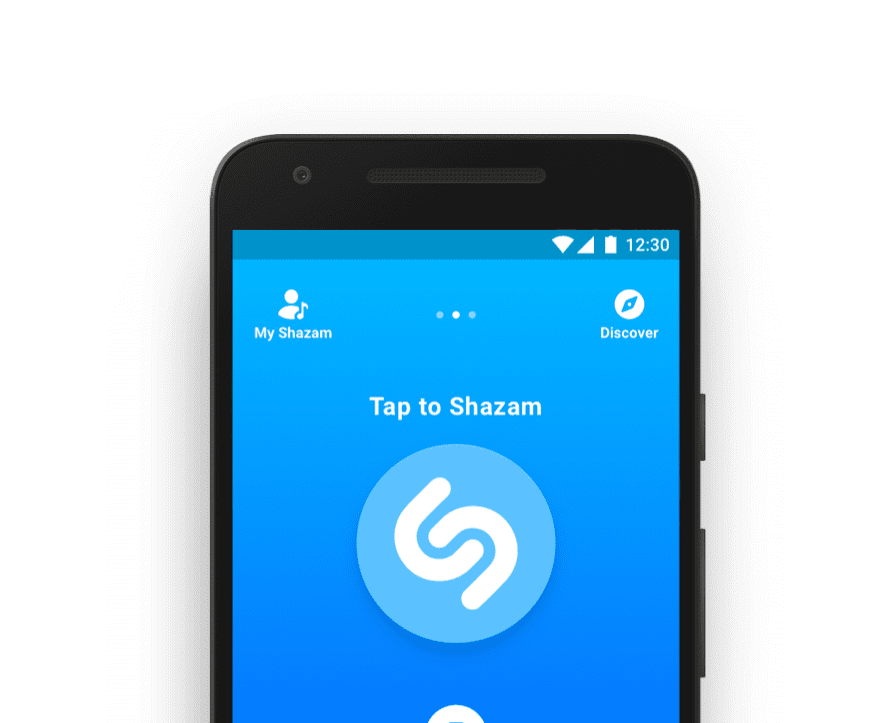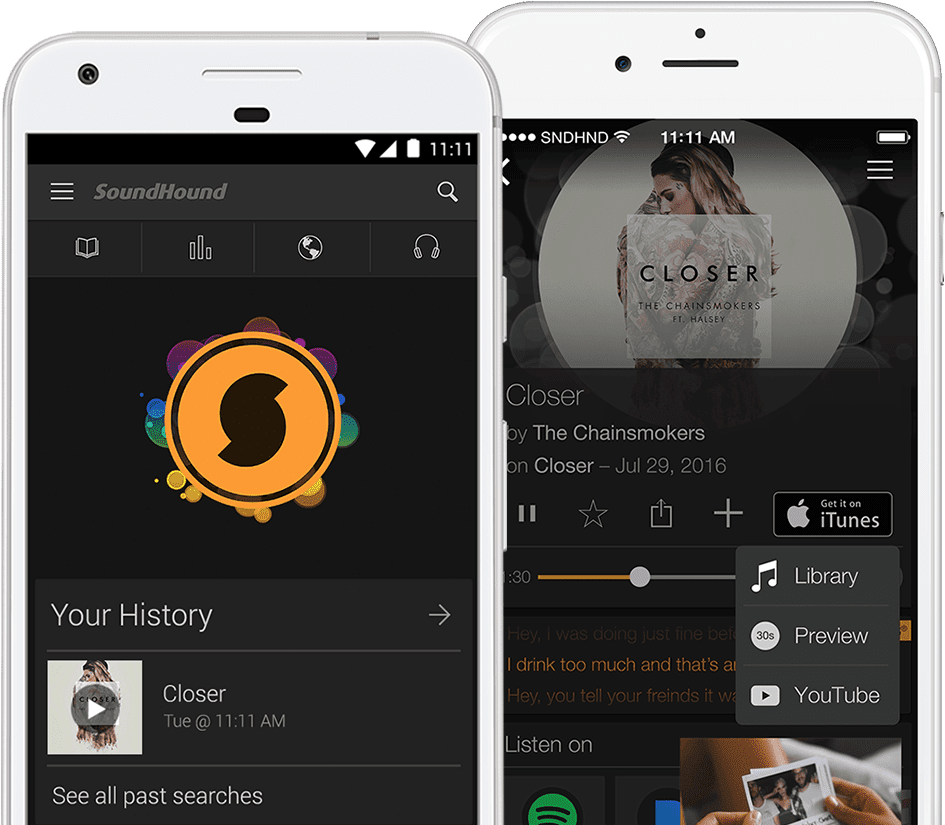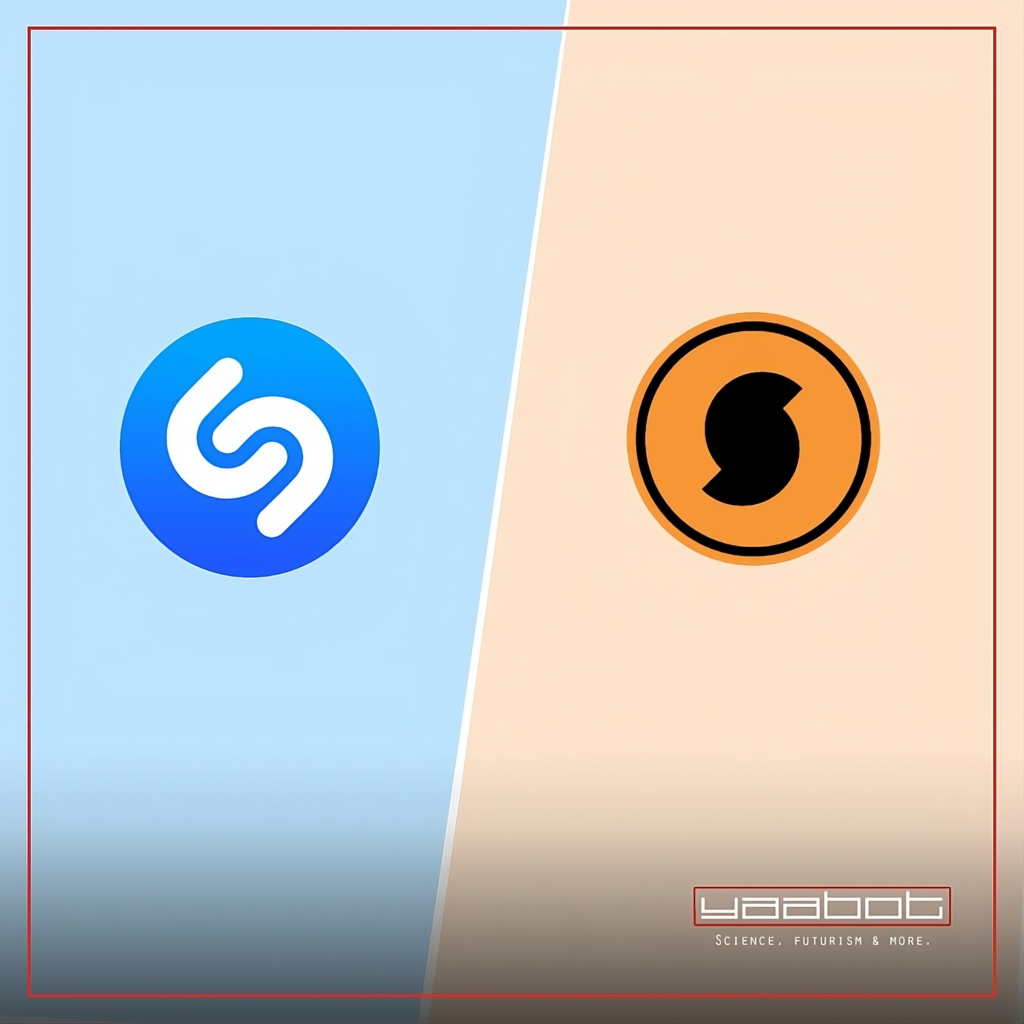Whether we’re at a party, in a coffee shop or just hearing a new tune on the radio, Shazam and SoundHound have become our trusty allies in identifying the songs that we love. But how do Shazam and SoundHound work? In this post, we’ll take a deep dive into the science behind music recognition apps. We’ll also explore the similarities and differences between these two popular apps.
First -what is Music Recognition?
At its core, music recognition involves identifying music through the use of machine learning algorithms. The algorithms analyze the characteristics of a song, such as its tempo, melody, and beat structure, to create a unique audio fingerprint. This fingerprint is then compared against a database of millions of songs to find a match.
Music recognition technology has a wide range of uses beyond just identifying songs. For example, it can be used in the music industry to track the use of copyrighted material. Or in the field of music therapy to help patients with cognitive or physical disabilities engage with music.
The Basics of Music Recognition Tech

Music recognition technology is a complex process. It involves analyzing an audio signal and comparing it to a database of audio fingerprints – and that’s the essence of how Shazam works, or how SoundHound works.
An audio fingerprint is essentially a digital signature of a sound that’s been extracted from a music track. The recognition software uses a variety of algorithms to identify and match the audio fingerprint to a song within its database. Once a match is found, the app will display information about the song, such as the artist, album, and song title.
But how does this tech actually work?
When you use a music recognition app such as Shazam or SoundHound to identify a song, the app first records a short audio clip of the track. This clip is then analyzed by the app’s algorithms, which break it down into its component parts, such as the melody, rhythm, and harmony. The app then compares these parts to its database of audio fingerprints, searching for a match.
One of the key challenges in music recognition is dealing with variations in sound quality and background noise. To address this, many apps use advanced noise reduction techniques, as well as machine learning algorithms that can adapt to different types of audio environments.
How Shazam and SoundHound Work: The Evolution of Music Recognition Apps
The concept of music recognition technology has been around for decades. The first system was developed in the 1980s and used a spectrogram to analyze sound waves. However, it wasn’t until the growth of the internet and the widespread adoption of smartphones that music recognition technology really took off.
Today, music recognition apps are used by millions around the world. Many apps also provide users with additional information about the music they’re listening to, such as lyrics, artist bios, and concert information.
As the tech continues to evolve, it’s likely that music recognition technology will become even more sophisticated. For example, some researchers are exploring the use of artificial intelligence and machine learning to create more accurate and efficient music recognition algorithms.
Shazam and SoundHound: How Does Shazam Work?

Shazam is a popular music identification app that has become a household name. It is used by millions worldwide to identify songs they hear on the radio, in stores, or on television. But really, how does Shazam music recognition work?
Unique Audio Fingerprints
How Shazam works is by creating a digital signature of a song, using a specific audio fingerprinting algorithm. The algorithm takes a small audio sample, usually around 10 seconds in length, and creates a unique fingerprint based on the characteristics of the sound.
These characteristics include things like the tempo, melody, and rhythm of the song. The algorithm then compares these characteristics to a massive database of millions of songs to identify the track.
This process is incredibly fast and accurate, and it’s how Shazam can a identify song in a few seconds.
Shazam’s Database and Matching Process
Shazam has a vast database of over 11 million songs. When you use Shazam to identify a new song, the app sends the unique fingerprint to its servers, which then search through its extensive library for a match.
The database is constantly updated with new songs and artists, so Shazam can identify even the most obscure tracks.
Once the app finds a match, it will display information about the song, including the title, artist, and album. It may also provide links to the song on various music streaming platforms, such as Spotify or Apple Music.
Shazam’s Features and Limitations
Shazam has a variety of features beyond its music recognition capabilities. For example, you can use the app to stream music, create playlists, and view music videos.
Shazam also allows you to share your music discoveries with friends and see what others are Shazaming.
A few limitations too. It can’t recognize live performances or songs with low-quality sound, and it requires an internet connection to work.
Despite these limitations, Shazam remains one of the most popular music identification apps. Its unique audio fingerprinting algorithm and massive database of songs make it essential for any music lover.
Shazam and SoundHound: How SoundHound Works

SoundHound’s Approach to Audio Fingerprinting
SoundHound works with a unique approach to audio fingerprinting, based on the concept of pattern matching. Instead of creating a digital signature of a song, SoundHound’s algorithm looks for patterns within the audio signal to identify the track. This allows SoundHound to recognize live performances and songs with poor sound quality, which Shazam can sometimes struggle with.
SoundHound Database and Matching Process
SoundHound has a database of over 40 million songs, making it one of the most extensive music libraries available. When you use SoundHound to identify a song, the app analyzes the audio signal and searches its database for a match. Like Shazam, the process takes only a few seconds. Once a match is found, the app will display additional information about the song.
SoundHound: Features and Limitations
SoundHound has a variety of features beyond its music recognition capabilities. For example, you can use the app to identify a song by singing or humming it yourself. Additionally, SoundHound can recognize songs that are playing in the background, even if you’re using the app for something else. However, like Shazam, SoundHound requires an internet connection to work.
Comparing Shazam and SoundHound

While both apps serve the same basic purpose of identifying songs, they have their own unique features and strengths.
Speed and Accuracy
When it comes to speed and accuracy, both Shazam and SoundHound are excellent performers. Shazam is typically faster at recognizing songs due to its unique audio fingerprinting algorithm, which matches the audio sample to a vast database of songs. SoundHound, on the other hand, is known for its ability to recognize live performances and songs with poor sound quality. This is due to its use of sound pattern recognition technology, which can identify songs even if they’re not playing at full volume or have background noise.
Both apps also have a high success rate in identifying songs, with Shazam boasting a 95% accuracy rate and SoundHound claiming a 98% accuracy rate.
User Interface and Experience
Both apps have interfaces that allow users to quickly and easily identify songs. Shazam features a streamlined interface that’s easy to use, with a large button that users can tap to identify a song. Once a song is identified, users can view information about the song, listen to a preview, and even add it to their Spotify playlist.
SoundHound, on the other hand, has a more robust interface with additional features like voice commands and lyrics integration. Users can identify songs by speaking or singing into the app, and SoundHound will provide the song title and lyrics. The app also has a feature called “LiveLyrics,” which displays the lyrics in real-time as the song is playing.
Additional Features and Integrations
Shazam and SoundHound both have a range of additional features beyond their music recognition abilities. Shazam allows users to stream music, view music videos, and create playlists. The app also has a feature called “Shazam for TV,” which can identify TV shows and movies by listening to the audio.
SoundHound, on the other hand, can identify songs by singing or humming them, which is a unique feature that sets it apart from other music identification apps. It also integrates with services like Spotify and Apple Music.
Overall, both Shazam and SoundHound are excellent options for identifying songs, with their own unique features and strengths. Whether you’re looking for a fast and accurate music identification app or a more robust app with additional features, both apps have something to offer. Check out our detailed article on Shazam vs SoundHound to know more.
The Bottomline
Music recognition tech has come a long way since the days of the spectrogram. Today, both Shazam and SoundHound work with powerful music recognition capabilities that allow users to quickly and easily identify songs. Whether you prefer Shazam’s fast and accurate audio fingerprinting or SoundHound’s pattern-matching approach, both apps offer a great user experience and a range of additional features to enhance your music listening experience.


